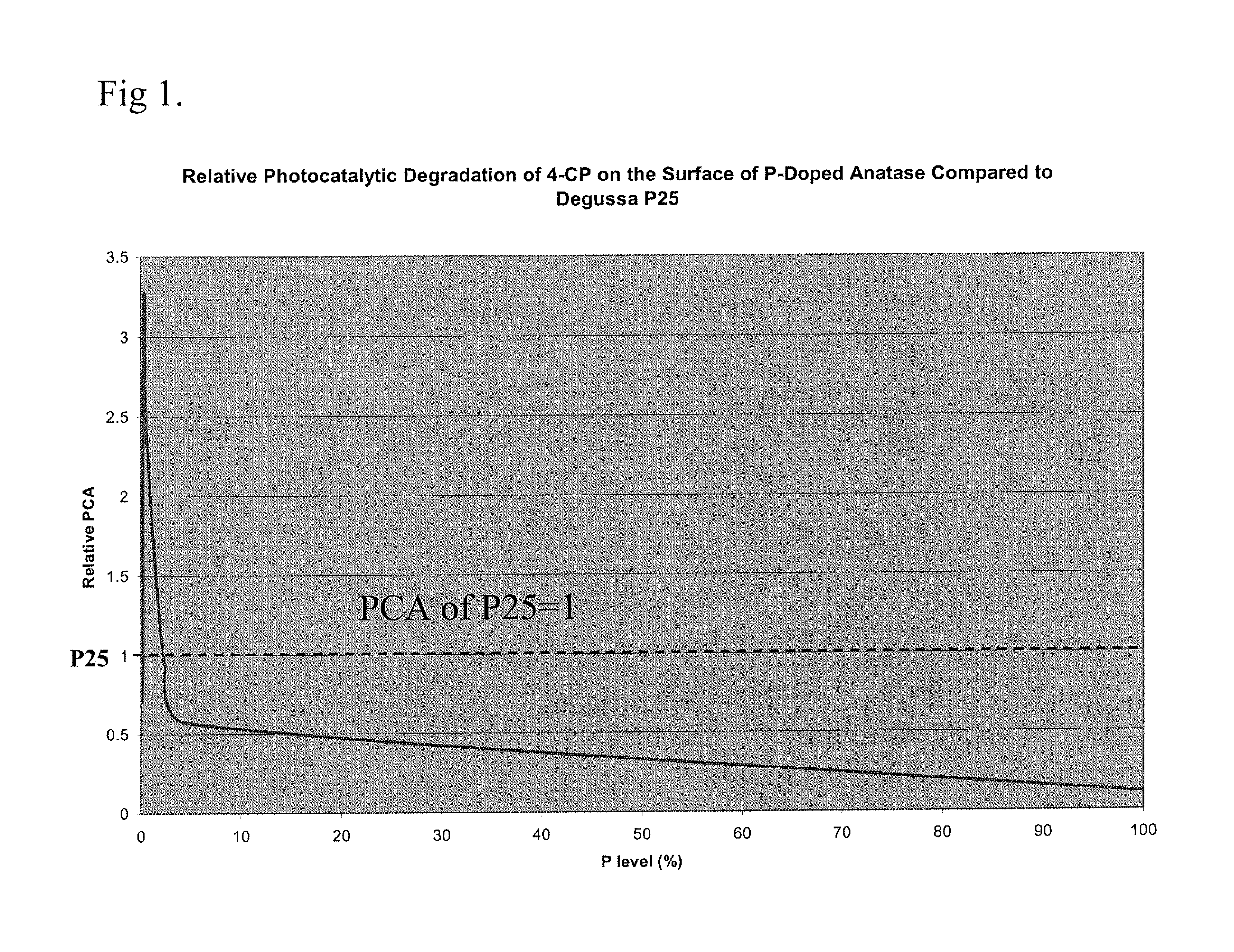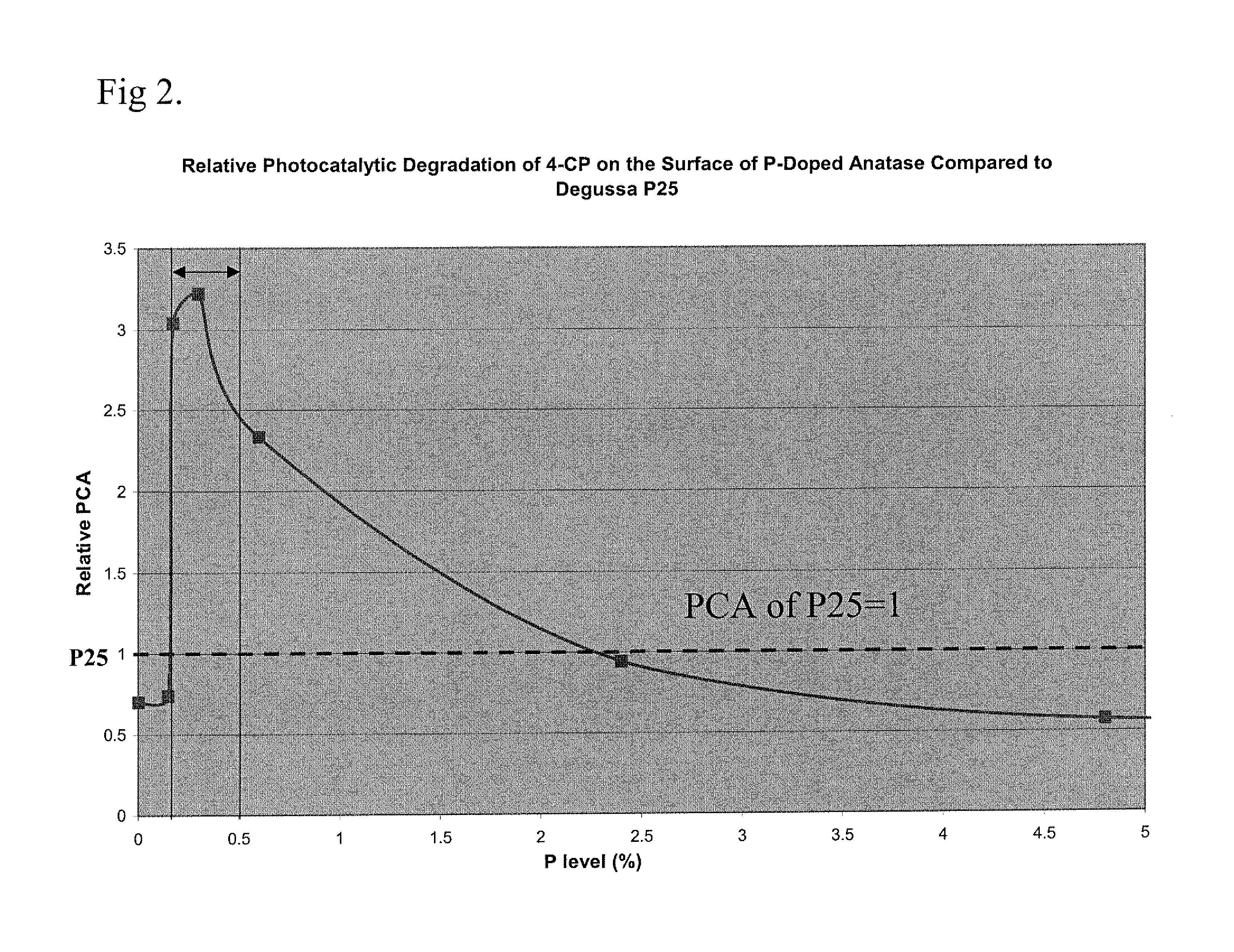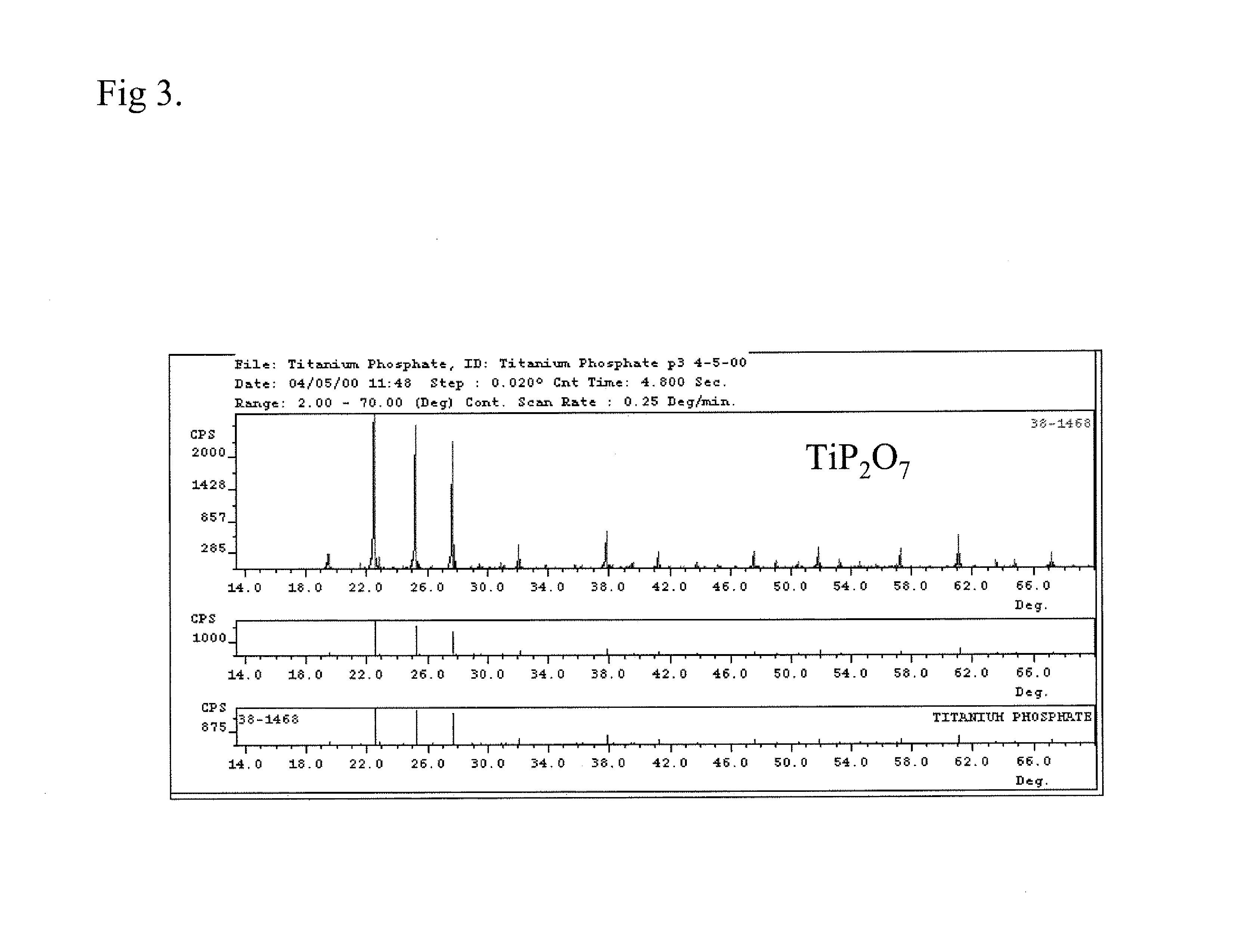HIGHLY PHOTOCATALYTIC PHOSPHORUS-DOPED ANATASE-TiO2 COMPOSITION AND RELATED MANUFACTURING METHODS
a technology of phosphorus-doped anatase and composition, which is applied in the direction of catalyst activation/preparation, physical/chemical process catalysts, chemistry apparatuses and processes, etc., can solve the problems of difficult comparison of reported studies and systematic study of the correlation between dopants and exact effects, and achieve enhanced photocatalytic activity
- Summary
- Abstract
- Description
- Claims
- Application Information
AI Technical Summary
Benefits of technology
Problems solved by technology
Method used
Image
Examples
example 1
[0027] Titanium oxychloride solution (120 g Ti / L) was spray dried at 250° C. to produce an intermediate that was further calcined at 550° C. for 24 hours. Primary particles obtained in the calcinations were about 40 nm in size. The particles were organized in a hollow sphere thin film macrostructure. The product was further dispersed to the primary particles. Photocatalytic mineralization of organic compounds on this product was about the same as on the commercial TiO2 standard Degussa P25 (FIG. 5 and FIG. 6).
example 2
[0028] Titanium oxychloride solution (120 g Ti / L) was treated with an amount of phosphoric acid equal to 0.3 wt % of phosphorus in TiO2. The solution was spray dried at 250° C. to produce a solid intermediate that was further calcined at 750° C. for 16 hours. Primary particles obtained in the calcinations were about 40 nm in size. The particles were organized in a hollow sphere thin film macrostructure. The product was further dispersed to the primary particles (FIG. 4). Photocatalytic degradation of organic compounds on this product was about three times faster than on the commercial TiO2 standard Degussa P25 (FIGS. 5, 6 and 7). Absorption of n-BOH on the surface of this product was about two times higher than on Degussa P25.
example 3
[0029] Titanium oxychloride solution (130 g Ti / L) was treated with an amount of phosphoric acid equal to 2.4 wt % of phosphorus in TiO2. The solution was spray dried at 250° C. to produce an intermediate that was further calcined at 800° C. for 16 hours. Primary particles obtained in the calcinations were about 40 nm in size. The particles were organized in a hollow sphere thin film macrostructure. The product was further dispersed to the primary particles. Photocatalytic mineralization of organic compounds on this product was significantly slower than on the commercial TiO2 standard Degussa P25. In addition, many organic decomposition intermediate products were formed during the photodegradation (FIG. 8).
PUM
| Property | Measurement | Unit |
|---|---|---|
| temperature | aaaaa | aaaaa |
| temperature | aaaaa | aaaaa |
| weight percent | aaaaa | aaaaa |
Abstract
Description
Claims
Application Information
 Login to View More
Login to View More - R&D
- Intellectual Property
- Life Sciences
- Materials
- Tech Scout
- Unparalleled Data Quality
- Higher Quality Content
- 60% Fewer Hallucinations
Browse by: Latest US Patents, China's latest patents, Technical Efficacy Thesaurus, Application Domain, Technology Topic, Popular Technical Reports.
© 2025 PatSnap. All rights reserved.Legal|Privacy policy|Modern Slavery Act Transparency Statement|Sitemap|About US| Contact US: help@patsnap.com



